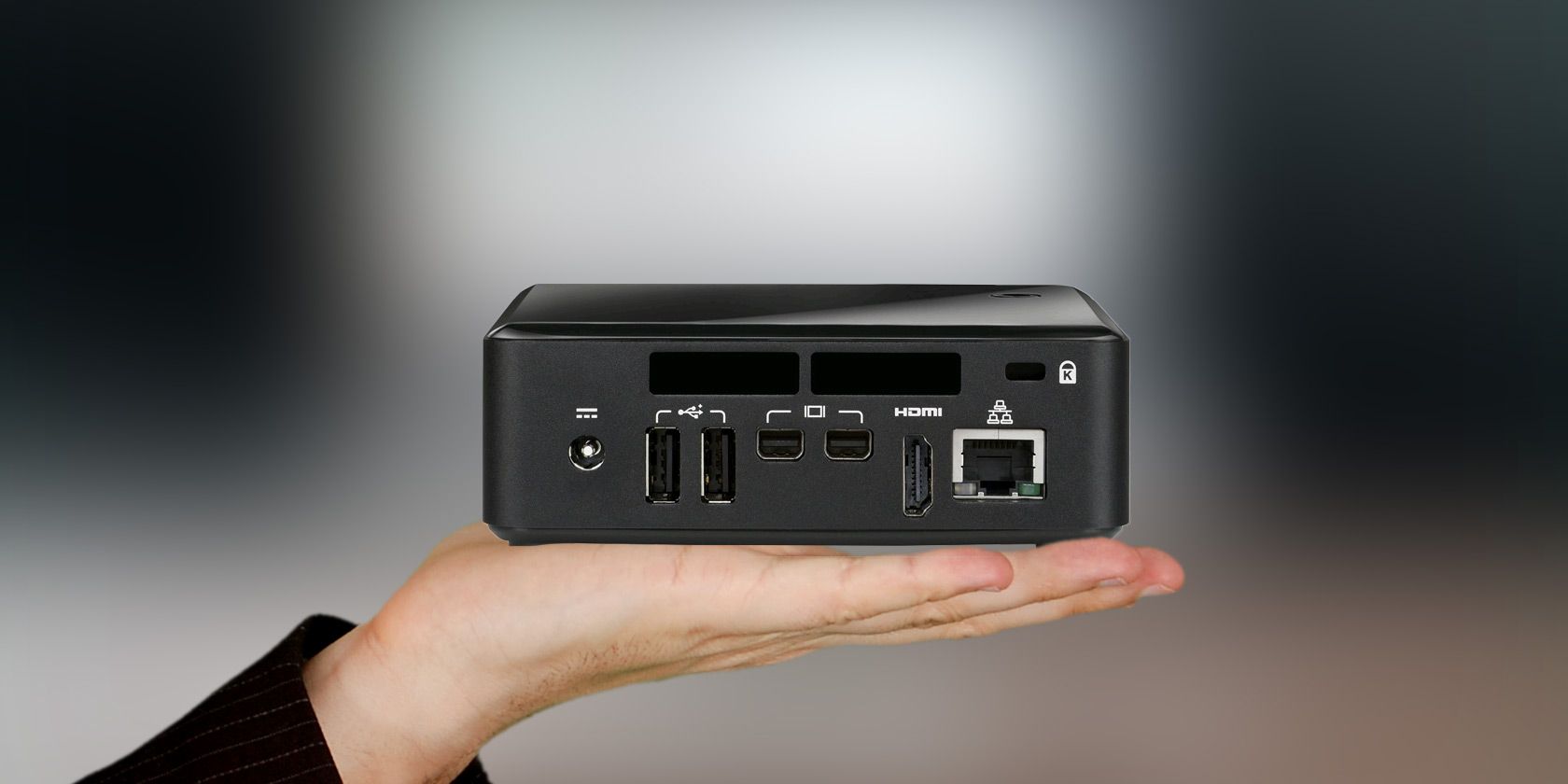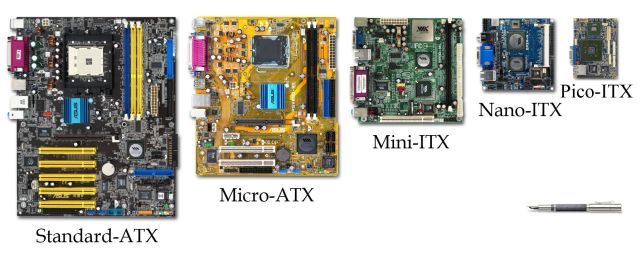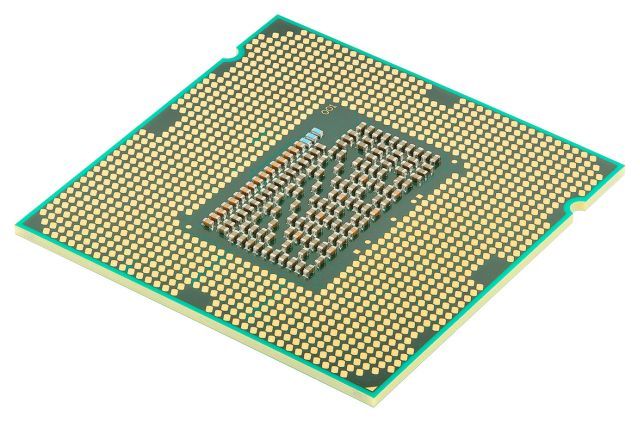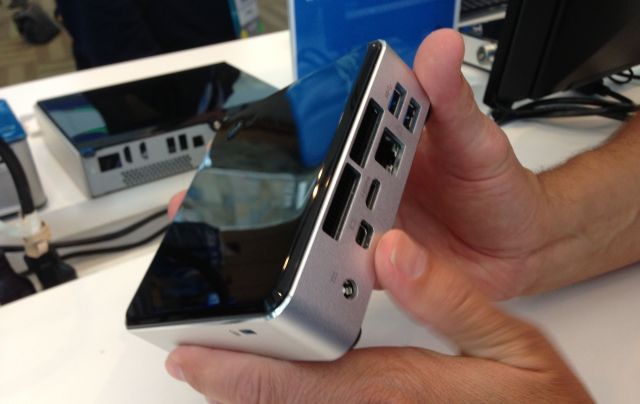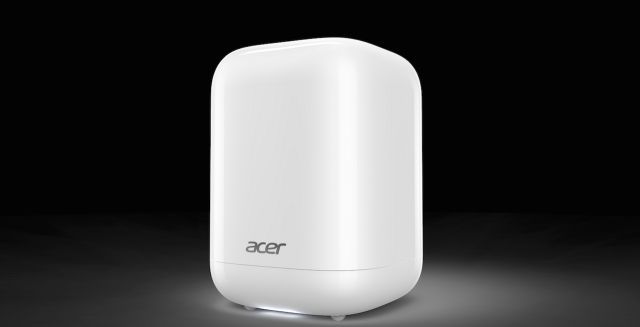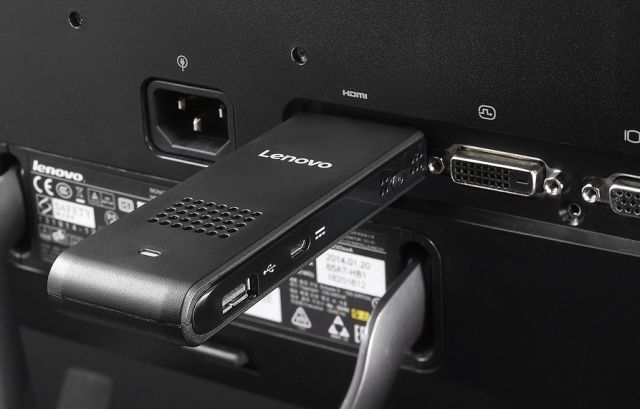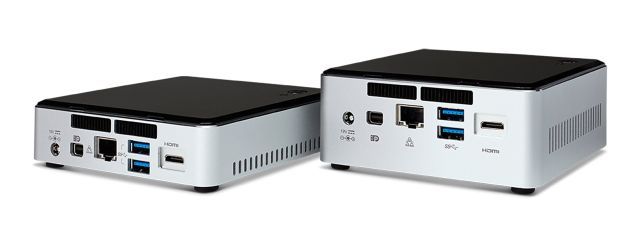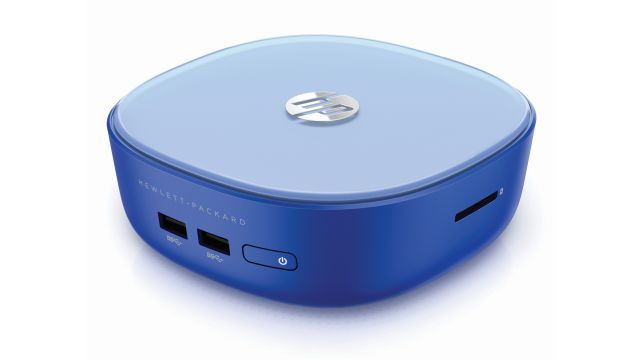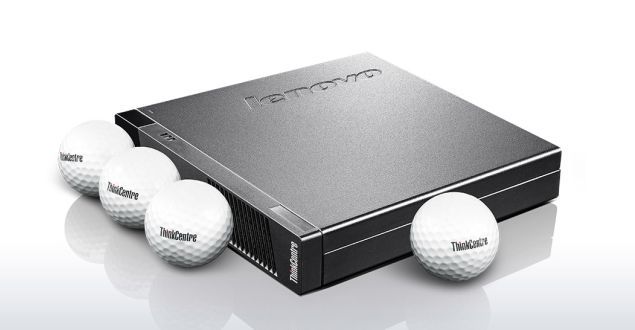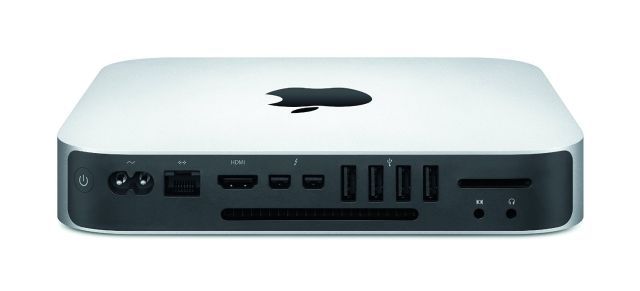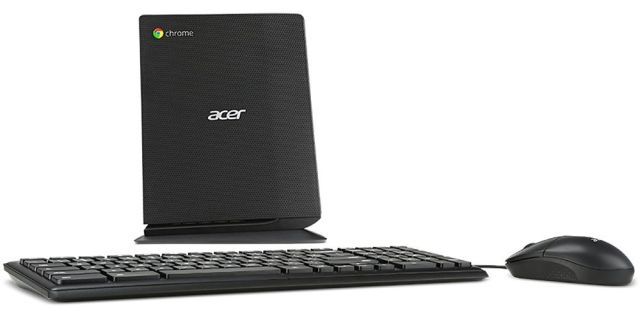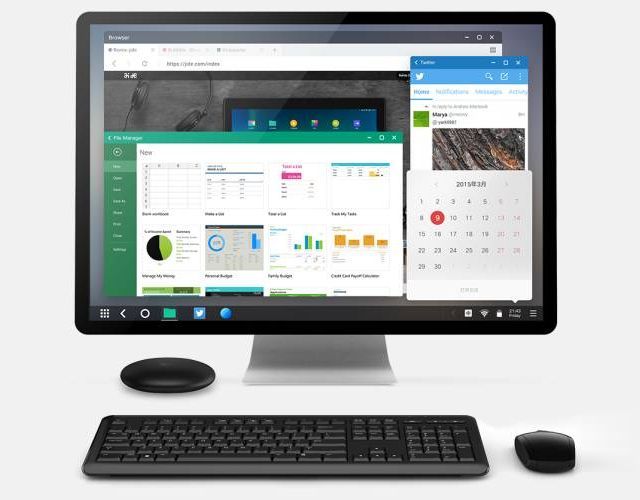The end is nigh for the hulking tower PC. Computers are fitting into the size of your palm, some as small as thick pen drive. But what's the technology that has taken them there, and are these mini PCs really good enough to be your primary computer?
As Moore's Law sets in, hardware is becoming smaller and cheaper by the day. Meanwhile, as Wirth's Law states, software development isn't able to keep pace with hardware. The end result is that we have the same operating systems and programs of yesterday running smoothly on tinier versions of the computers they were built for.
A new generation of mini PCs is making its way into our homes and offices now. These aren't just media players, although mini PCs serve that purpose better than set top boxes and dedicated media players. The new lot of mini PCs are proper personal computers. Many of these run Windows, some operate Linux, and there are even a couple with Android-based desktop operating systems.
What Makes Mini PCs Possible?
To understand the miniaturization of the PC, you need to know the basic parts of a computer. Over the years, most of these parts got smaller, integrated with other parts, or obsolete.
The big technological innovation came with the motherboard. From 2000 to 2007, hardware manufacturer VIA Technologies has made significant breakthroughs in motherboard size -- minimizing the standard ATX and Micro ATX to three new sizes: Mini ITX, Nano ITX, and Pico ITX.
While the motherboard was miniaturized, at the same time, technologists were focussing on "integrated peripherals". Basically, this means that components which were previously separate add-ons for a motherboard were not being scaled down, instead they were added directly onto the main PCB. The result was a modern motherboard came with all the bells and whistles: ethernet port, USB ports, Wi-Fi, Bluetooth, audio output, and other wireless and non-wireless standards.
The last few years have also seen the exclusion of an optical media drive from computers. Most people don't use CDs or DVDs on a regular basis now, and there are plenty of alternatives to the optical disc that work better while taking up less space.
Finally, chip makers Intel and AMD started integrating the CPU and GPU into a single chip called the APU. Unlike AMD, Intel still refuses to call its modern line of processors "APUs", but nomenclature aside, both companies are making the same thing. This means that you don't need an external graphics card any more, and today's APUs are good enough to even play new games, let alone any other needs that a regular user would have.
All of this miniaturization has now reached a point where a computer fits into the casing of an old thumbdrive. The new Intel Compute Stick turns any TV into a Windows PC, and it costs just $149. These devices are obviously not as powerful as the larger mini PCs, but they do serve the same purpose: a proper, full-fledged desktop computer at a fraction of the size and cost.
What Software Can I Run on a Mini PC?
Until 2007, the world was concentrating on better desktop operating systems and the Windows vs. Mac vs. Linux debate was still raging. But then Steve Jobs hopped on stage, took a tiny phone out of his pocket, and said this will be our main technological device going forward.
Jobs was right and the smartphone ushered in the post-PC era. This also meant that software developers started concentrating on mobile operating systems and apps, so the growth of the desktop operating system declined.
Declined, but not dead. The desktop computer or laptop is still an integral part of the lives of most people. New operating systems like Windows 10 promises a cross-over platform that works seamlessly across smartphones and traditional PCs.
As it stands today, mobile operating systems aren't ideal for use with a mini PC, and there's a simple reason for that: input. Mobile operating systems like Android and iOS were designed with touchscreen input in mind, and so developers built their apps accordingly. A mini PC uses a keyboard and mouse, so there's a slight disconnect. There are a few exceptions with forks of Android that are made for desktop, but as a general rule, your mini PC is still best served with a desktop operating system: Windows, Mac, Linux or Chrome OS.
Of course, once you install any of those operating systems, you can also download and install any supported program or game. It is, for all intents and purposes, a full-fledged PC.
What is a Mini PC Good For?
Today, a mini PC has several advantages over a full-sized desktop PC.
- Size: Obviously, the biggest advantage is the amount of space you save. Even in a small 5 x 5-inch box, you will get the kind of power that a desktop PC would have had 1-2 years ago. The best part? That is enough for most users.
- Power consumption: The hardware for a mini PC is made to run on less power. Gone are those bulky 600W power supply units! In fact, you can even build your own tiny, silent and green mini PCs -- although today, it makes more sense to buy one of Intel's new NUC units, which we'll get to in a bit.
- Customizability: Most mini PCs can be opened up just like a standard desktop PC, and you can swap or upgrade parts. In most cases, the motherboard and CPU/APU are difficult to upgrade, but the rest of the components like the hard drive and RAM can be changed as easily as your old tower.
- Cost: Compared to laptops and full-sized PCs, mini PCs are much more cost-effective to purchase and operate.
- Design: Since manufacturers are building the mini PC case with integrated power supply, motherboard, and CPU, they are able to experiment more freely with the design. So far, there have been some cool mini PC models released, such as the Zotac ZBox Sphere and the Acer Revo One.
What Are the Limitations of a Mini PC?
While there is plenty to love about mini PCs, you do have to make some sacrifices.
- Power Professionals: Do you want to edit videos? Are you a designer who has Photoshop open all the time? Think again about buying a mini PC. Technically, it will work, but you just won't get the desired performance out of it.
- Gaming: At this moment, gaming-oriented mini PCs aren't worth the money, even if you're looking at the powerful Gigabyte Brix or Alienware Alpha. If you're a gamer, you are better off with a tower PC. That said, the next generation of mini PCs looks promising. Zotac recently showed off the EN970 and Valve's Steam Machines are coming in November.
- Avoid Stick PCs: Right now, the Intel Compute Stick and the Lenovo IdeaCentre Stick 300 are good ideas, but just don't deliver in execution. It's difficult to set up, not very powerful, and has various connectivity issues.
The Best Mini PCs You Can Buy Today
Intel has been at the forefront of the mini PC movement with its Next Unit of Computing or NUC line of computers. The NUC comes with a custom Intel motherboard and a fifth generation Intel processor, ranging from the i3 to the i7. These devices look great, are easily upgradeable, and are silent while running. They are barebone units, which means you have to purchase and install the RAM and hard drive yourself, which is great since you can either reuse your old computer's parts or buy specific parts depending on your usage. Among the available models at the moment, the Intel NUC5i5RYK seems like the best value-for-money proposition. Be advised that you'll need to buy a keyboard and mouse as well.
If you're buying a PC on a budget, don't look any further than the HP Stream Mini. It's tiny, it's cute, and yet it's powerful enough for basic computing. It even comes bundled with a wireless keyboard and mouse! The 2GB of RAM is limiting for the multi-taskers among us, and the 32GB of internal storage is annoying, but a quick RAM upgrade and a great external hard drive can fix those issues.
Lenovo ThinkCenter M93 Tiny ($555)
For a business professional setting up computers in an office, the ability to tinker around with the components isn't as important as security and service. Lenovo's ThinkCenter M93 Tiny is made for such office spaces. Apart from a Core i5 processor, 4GB RAM and a 500GB HDD, you'll get Lenovo's enterprise-level security and 3-year next-business-day on-site warranty.
It won't run Windows, but who cares? The Mac Mini is still one of the best mini PCs around, and you get all of Apple's bag of goodies with it. Again, the keyboard and mouse add to the initial costs, so it's a pricey proposition, but the device is absolutely worth it. Plus, unlike most Apple devices, pre-2014 Mac Mini can be easily upgraded with more RAM or a better hard drive.
Edit: post-2014 Mac Minis aren't easily upgradeable. You're better off getting those upgrades at the time of purchase.
Acer Chromebox CXI-4GKM ($240)
You can run Android apps on Chrome OS now, which is just another reason to give Chrome OS a second chance. If all you want is a lightweight device to turn your TV into a PC, the Acer Chromebox might be just what you need. Yes, the hardware seems underpowered, but Chrome OS runs smoothly on these low-powered specs, unlike Windows. Remember to buy the CXI-4GKM system, which comes with a made-for-Chrome keyboard and mouse and 4GB of RAM, instead of the usual 2GB you find on most Chrome devices.
Coming Soon: Jide Remix Mini [No Longer Available]
Yes, we think Android isn't ready to be a mini PC operating system yet, but there's one company which begs to differ. Jide's new Remix Mini comes with Remix OS, which is a fork of Android made to work like a desktop operating system, complete with a taskbar, file manager, multi-tasking, keyboard shortcuts and more. You can check out Liliputing's full review of the Remix Mini for more details. It'll cost just $30 eventually, and even $20 if you back it during its Kickstarter phase, but you'll have to wait for this one.
Mini PCs vs. Tower PCs vs. Laptops
Some of our tech-inclined brethren have suggested that instead of a mini PC, it makes more sense to buy a laptop and connect it to a screen with an HDMI cable. Others say that mini PCs are just not good enough to replace a tower PC yet. Where do you stand on this fight between mini PCs, tower PCs, and laptops?

